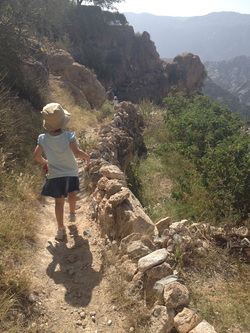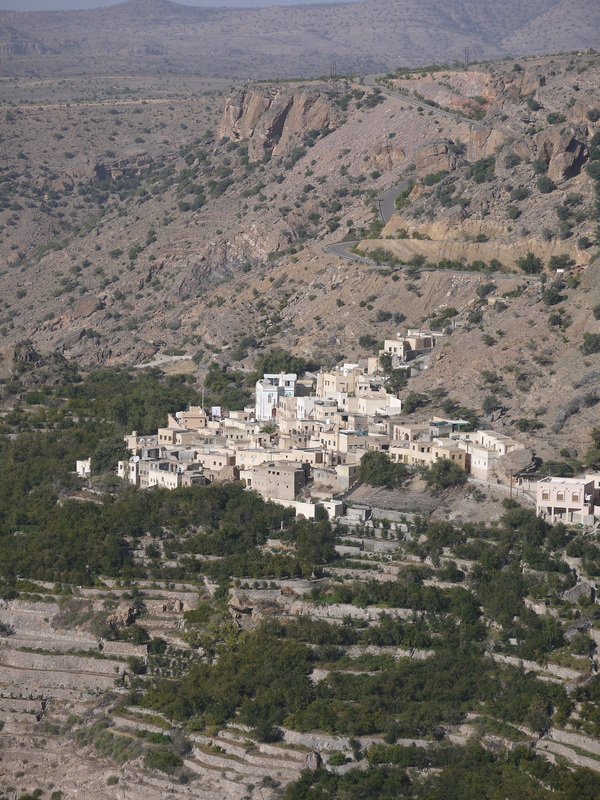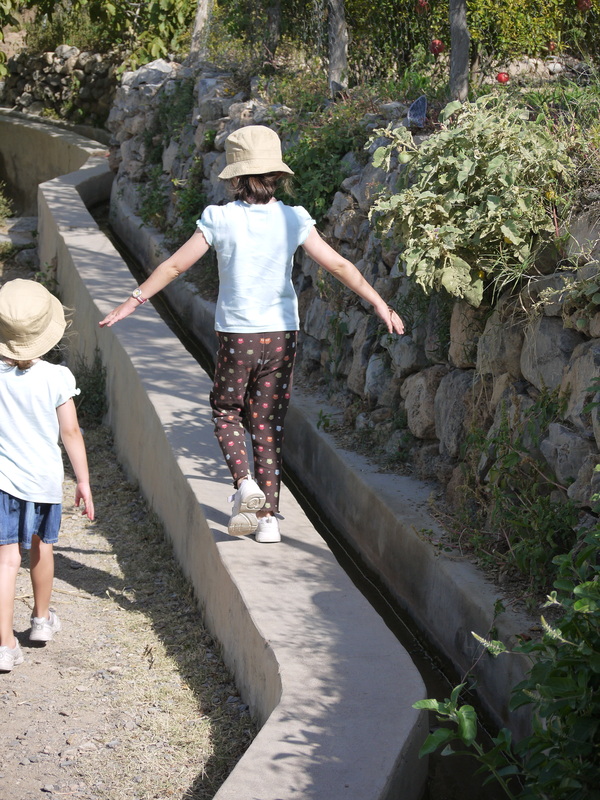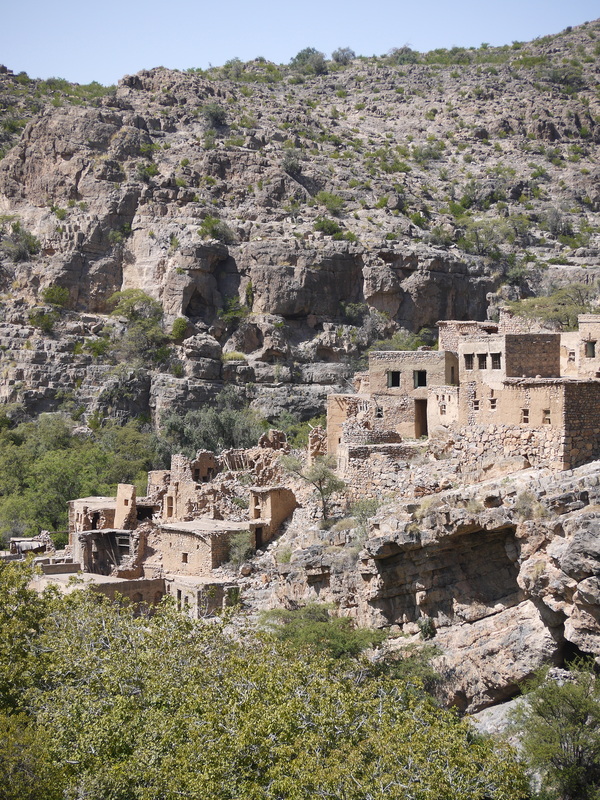
With dark thick clouds of deep blue and purple boiling and churning overhead, and spots of rain on the windscreen, the dramatic weather matched the surroundings perfectly.
The nearest edges of the Western Hajar mountains cut through the mist to peak out enticingly as we drove further from the UAE/Oman border. But hidden secrets lay out of sight around each hairpin bend as we climbed higher and higher. Valleys opened up, villages appeared out of nowhere, and new layers of peaks appeared out of the dark silhouettes. At every turn there was something new to see. And the weather did not break – no downpours, just a calm 25C.
This was a stark contrast to our city life. When we left, Dubai was dazzling in sunny 39C, and our focus was soft on the rolling dunes that lead you out of the metropolis. As soon as we reached the border the soft focus lifted to reveal the promise of adventure for those who love to explore.
This was the start of a five day trip that offered peaks, forts, traditional villages and so much more. I find it liberating to pack a car, throw in a couple of children and drive off to explore the horizon. The only things we planned was the accommodation – having young children you need a little security, although we would have managed with a tent and a cooler box.
Day one of our route took us from Dubai to Jebel al Akhdar in the Western Hajar mountains. There is so much you could see and do en route it’s worth stopping overnight and taking an extra day. It’s about a five hour drive plus stops at the border (at Hafit, which took two hours) and for lunch.
Ibri, which has a fort, is a good place to stop for lunch. Jabrin and Bahla are the next sizeable towns, again with forts. They are the starting points for trips to Jebel Shams, Oman’s highest mountain (3,075m). Nizwa, a little further down the road, is well known for its fort and souq. It is Oman’s second biggest tourist destination.
Our aim though was to visit the Jebel al Akhdar hilltop villages on the Saiq Plateau. Although a little off the main tourist train there are a lot of new hotels under development. Unfortunately a new hotel is being built on top of Diana’s lookout, a famous spot visited by the late British Princess of Wales, but the views are still spectacular.
This is a great area for walking, camping and exploring. From the meandering path that takes you through the hill top villages of Al Ayn and Ash Shirayjah, and along the traditional water ways (falaj), to the crumbling deserted villages at Wadi Bani Habib, where nothing remains except a few stones and memories, there is a lot to be discovered. The muted-coloured mountains resemble layers of play dough squashed together, left buckled, coiled and curved by the pressure.
The roads are tarmacked, and even though a 4x4 is required to gain access to the mountain range, the way is easy, although twisty and steep. The route weaves and meanders around the slopes, opening the way to endless exploration. I have spent too little time here – I urge you not to make the same mistake.
In part two we will take a trip to the desert. For more photos, please visit our Flickr page by clicking here.
The practical bit
Border crossing:
If you’re leaving from Dubai, start early as it’s difficult to judge the traffic at the border crossing. You will need to go through the UAE post for an exit visit and then the Oman post, a little further down the road, for your entry stamp. You will also need to have car insurance for Oman, which can be bought at the border post, or in advance from your regular insurance provider.
Safety:
The weather in the mountains is changeable. Flash floods are unpredictable so avoid camping in wadis. There is a police check point at Birkat Al-Mawz, just outside Nizwa. Although you can avoid going off-road, and the tarmacked roads are in good condition, you will not be allowed to pass the checkpoint without a 4x4 car.
Where to stay:
Sahab Hotel, Sayh Qutnah, Saiq Plateau: The view from here is worth the visit alone. This small, but spacious hotel, has 27 well appointed rooms, opening onto a fossil garden with a beautiful mountain top swimming pool. We stayed in a two room Rustic suite where the lounge sofa doubles as a bed for the children. The restaurant offers an a la carte menu at lunch time and in the evening there is a buffet. There is also a buffet, with egg and pancake station, at breakfast, which can be enjoyed on the veranda. The staff are welcoming and knowledgeable. www.sahab-hotel.com
What to do:
· Walk (route W18b) from the Sahab Hotel. It’s a great walk where you’ll pass villages of mud and stone, clinging tightly to the cliffs, with steps of irrigated terraces spread out below. The path is rocky but pretty easy, and in places you can walk on the falaj (traditional stone water course). We managed the route with a six year old and a four year old, although in places some hand holding was required.
· Visit the cave dwellers: From Birkat Al-Mawz take the tarmac road up the mountain. Once you’re on the Saiq Plateau, after the right hand turning to Al Manakhir, the road divides. Take the right fork. If you arrive at a petrol station you’ve gone the wrong way. Follow the winding road to Shinot village (If you miss the turning you’ll end up in Al Hail). In the village turn right. The tarmac will run out and turn into a steep dirt track. Eventually you’ll come to the cave village of Al Sawjrah. It’s little tricky to find as the road doesn’t go directly to the village. You’ll have to cross a small wadi on foot.
What to read:
· Oman Trekking by Explorer
· Oman Off-Road by Explorer
A bit of trivia:
The word “ayn” means natural spring.
Please note:
The English translation of Arabic place names means you may see the same name with different spellings.






 RSS Feed
RSS Feed
